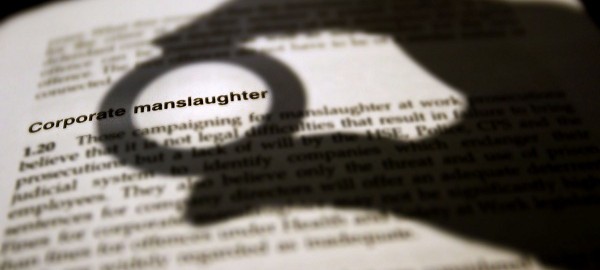It is an undisputed fact that money laundering is a major hindrance to a stable EU market. Money laundering distorts economies by allowing the corrupt to legitimise the illegal. It has unfortunately become increasingly common to witness the world’s most corrupt to launder their funds derived from illicit sources into financial centres.
The Fourth EU Anti Money Laundering Directive (the “Directive”), which has just made its way through the EU’s legislation, is designed to update and improve the EU’s Anti-Money Laundering (AML) and Counter-Terrorist Financing (CTF) laws. The changes are in line with the recommendations issued in 2012 by the Financial Action Task Force (FATF) which is the international global AML and CTF standard-setting body.
What becomes immediately clear from an overview of the Directive is that it obliges, for the first time, EU member states to maintain central registers listing information on the ultimate beneficial owner of corporate and other legal entities, as well as trusts in certain cases. Interestingly enough, it appears that these central registers were only included by MEPs during the negotiations and were not envisaged in the European Commission’s initial proposal.
Clearly, the aim is to enhance transparency and target those criminals in Europe who have for many years used the anonymity of offshore companies and accounts to hide their financial dealings. In the words of Krisjanis Karins (EPP, LV) (Economic and Monetary Affairs Committee rapporteur) “Creating registers of beneficial ownership will help to lift the veil of secrecy of offshore accounts and greatly aid the fight against money laundering and blatant tax evasion”.
Essentially, a central register of an EU country would contain a list of the ultimate owners of companies which register would be accessible to the competent authorities and their financial intelligence units (without any restriction) as well as to “obliged entities” (such as banks conducting their “customer due diligence” duties). Additionally, any person or organisation who can demonstrate a “legitimate interest” (such as investigative journalists and other concerned citizens) with respect to money laundering, terrorist financing and the associated predicate offenses – such as corruption, tax crimes and fraud – are granted access to beneficial ownership information, such as the beneficial owner’s name, month and year of birth, nationality, residency and details on ownership. Timely access to beneficial ownership information should be ensured in ways which avoid any risk of tipping-off the company concerned.
In terms of the Directive, any exemption to the access provided by member states would be possible only on a case by case basis in exceptional circumstances. Access to the information on beneficial ownership shall be in accordance with data protection rules and may be subject to online registration and to the payment of a fee. It is very dangerous that the Directive failed to define “legitimate interest” as this may give rise to confusion and uncertainty as well as potential room for abuse.
The persons who are able to demonstrate a legitimate interest should have access to information on the nature and extent of the beneficial interest held consisting of its approximate weight. Member States may, under national law, allow for access that is wider than the access mandated under this Directive. The UK, for example, has opted for a publicly accessible register of corporate beneficial ownership.
As far as trusts are concerned, the FATF recommendations have likewise obliged countries to take measures to prevent the misuse of legal arrangements for money laundering or terrorist financing. The FATF recommendations have specified that countries should ensure that there is adequate, accurate and timely information on express trusts, including information on the settlor, trustee and beneficiaries that can be obtained or accessed in a timely fashion by competent authorities. This was faithfully transposed in Articles 30 of the directive which provides that Member States shall require that trustees of any express trust governed under their law obtain and hold adequate, accurate and current information on beneficial ownership regarding the trust. This information shall include the identity of the settlor, the trustee(s), the protector (if any), the beneficiaries or class of beneficiaries, and of any other natural person exercising effective control over the trust.
The Directive further provides that Member States shall ensure that trustees disclose their status and provide in a timely manner the information referred to above to obliged entities (such as banks in the course of undertaking customer due diligence measures), when, as a trustee, the trustee forms a business relationship or carries out an occasional transaction above the threshold set out in points (b), (c) and (d) of Article 111 and accessed in a timely manner by competent authorities and FIUs.
This has inevitably triggered a debate as to how to reconcile this easy access to information with the right to confidentiality especially when once bears in mind that that trusts are widely used to protect the interests of vulnerable family members. As professionals, we all appreciate the importance of having measures in place to prevent the movement of illicit funds, and commit to ensuring that such measures are effective. We are experiencing on a daily basis the loss of human lives caused by terrorist attacks and we all feel this innate drive to do our part to curb the flow of funds to terrorist organisations and help curb these atrocities. Equally, as professionals, we have a commitment to preserve the legitimate confidentiality of our clients’ financial affairs. This will be an ongoing dilemma that most are confronted with. It is interesting to note that a much wider debate is under way in many countries on whether it is time to give power to governments to monitor email traffic to fight serious crime at the clear expense of the right of individuals to privacy. As a profession, we need to recognise that we are confronted by similar dilemmas and need to help develop effective solutions.
Thankfully, the mandatory register of trusts applies only to taxable trusts and it will not be public. In terms of the Directive, Member States shall require that the information mentioned above is held in a central register only when the trust generates tax consequences. The central register shall ensure timely and unrestricted access by competent authorities and FIUs, without alerting the parties to the trust concerned. Moreover, information on trusts will only be available to competent authorities. Ultimately this information could nonetheless be collected by tax authorities as a result of automatic exchange of tax information agreements and therefore one does not envisage that the impact on the institute of trusts will be too major in this sense. The abovementioned strict limitations placed on access to trust registers were naturally welcomed by trust practitioners especially when one considers that trusts in common law countries are regularly used to protect vulnerable beneficiaries, some of whom could be at significant risk if their identities were published. Therefore said limitations allowed families to maintain their fundamental right to respect for a private family life. Whilst the focus is on the Directive and therefore the direct impact on EU countries, the pressure to allow public access to beneficial ownership information is spreading around the world in the wake of the revised FATF Recommendations. To mention a few, it appears that the government of the British Virgin Islands is planning to introduce some new measures whilst the government of the Cayman Islands said it will work on the Directive. It is clear to everyone that we’re living in an era where there’s nowhere to run to or hide!
[i]
1 Article 11 provides that “Member States shall ensure that obliged entities apply customer due diligence
measures in the following cases:
(b) when carrying out an occasional transaction:
(i) amounting to Eur15,000 or more, whether that transaction is carried out in a single operation or in several
operations which appear to be linked; or
(ii) which constitutes a transfer of funds, as defined in point (9) of Article 3 of Regulation (EU) 2015/847 of the
European Parliament and of the Council exceeding Eur1000;
(C) in the case of persons trading in goods, when carrying out occasional transactions in cash amounting to
Eur10,000 or more, whether the transaction is carried out in a single operation or in several operations which
appear to be linked;
(d) for providers of gambling services, upon collection of winnings, the wagering of a stake or both, when
carrying out transactions amounting to Eur2000 or more, whether the transaction is carried out in a single
operation or in several operations which appear to be linked.[i]









